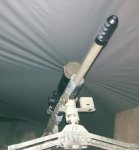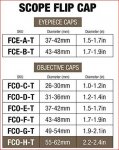Introduction
When Sig released their BDX line, I was pretty excited by the capabilities of the 2400, especially in terms of it’s connectivity and price point. Shortly after, I learned that a bino version was coming out, but I was not all that interested, figuring the cost would be entirely too high to make the investment a smart one for someone in my tax bracket. While I could see the speed and utility of a bino/rf combination, the thought of all my funds tied up in one object that could not be upgraded and could break and end up an overpriced set of binos just did not work for me.
So I was surprised when I saw the price point. Sig told me that these binos were not a competitor to Leica’s HD-B’s in terms of optical quality, but that they were decent binos with a killer RF integrated, at a price point making them accessible to more people.
Unfortunately, I did not get hold of a set until after my last hunt for the 2018-2019 season, so I was not able to use them extensively in the field like I was able to do with the 2400 or my Leicas last year. Nonetheless, I started testing them and I actually had most of my review on them completed some time back, including using them during a precision rifle course, and under a great number of conditions so as to be pretty confident in their ranging and optical capabilities. However, I really felt like I would not be completely confident in how they would fare until I had the chance to actually run them in the field, so I chose to hold this review until this season when I had an opportunity to use them for their intended purpose. While this season was not as successful as last in terms of game opportunities, I still feel like I got a much better feel for the binos, especially in terms of optical performance and workflow, than I had before using them hunting. So I apologize for the delay, but I felt like I needed real field experience with these for this review to offer its full value.
Out of the Box
When I first checked out the 3k, I was looking at them along side a set of Zulu 5’s and Zulu 7’s. They feel distinctly different than either of those. They are more weighty and thicker, ostensibly to make room for the RF electronics and battery system. On my scale, including a set of butler creek objective covers and a vortex eye piece cover, they weighed 2 lbs 3 oz. For comparison, with the Zeiss supplied eyepiece and objective covers, my FL’s weighed 1 lb 13 oz. So they are a bit heavier in the hand and around the neck. Nonetheless, they fit my face just fine, and there is sufficient eye relief for me, which is notable as I have deep-set eyes that make some optics’ eye relief too short for my use.
One thing I noticed is the lack of covers for the objective or eyepiece lenses. The binos do come with a harness (though I did not get one as mine is a demo unit), but, judging by how many different bino harness designs are on the market, it seems there is a great deal of disagreement about what a harness should look and work like. On the other hand, I think most people would like a straightforward set of covers to protect the lenses, and these are not included, nor are they available from Sig. I did try a set for some Vortex Fury’s, but they did not fit right on the objectives, finally settling on a set of Butler Creeks that work okay, but not perfect. Regardless, considering the general disagreement about harnesses, I think replacing the harness with some solid covers would be a good idea.
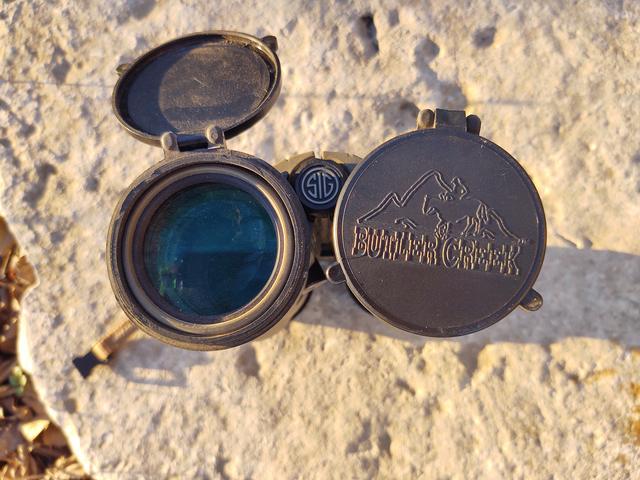
A set of Butler Creek flip up covers worked fine for the objectives, though they do sometimes come loose and a little black tape is a good security aid. For the eye piece, most any set of eye piece covers work, I used a set I got from Vortex
The focus from lock to lock seems pretty short to me, even compared to my Zeiss FL’s, but it works fine, just took a little getting used to.
There are two diopters that must be adjusted, in addition to the center focus wheel. The diopter on the right is for adjusting the RF display, and the one on the left serves the traditional purpose of the diopter. The thing I immediately noticed was that the diopters do not lock. And while the focus control on my 2400 was sufficiently stiff so it never moved on its own, the diopters on my unit moved pretty easily, such that I was concerned they would move inadvertently. While they have proved to be okay, if not ideal, on my unit, I know others have had them be able to be moved quite easily, so much so that the community has come up with a solution by adding a rubber gasket between the body and the diopter to increase the tension. This apparently has worked pretty well, and I meant to implement this before our trip to Colorado, but never got it done. Ultimately, I wish I had, as ours had some self movement when we got up in the 10-11k elevations, which apparently is seen in some of the early models that were over purged. Mine is a pre-production demo unit, and I understand that new units do not exhibit this problem. Ultimately, it was not a problem we could not work around, and we were able to work with the diopters well enough, but I understand that newer units seem to be a bit tighter out of the box. Still, from a user experience perspective, for something like this that will be a hard use item, the diopters should lock, or at least be designed to be quite stiff.
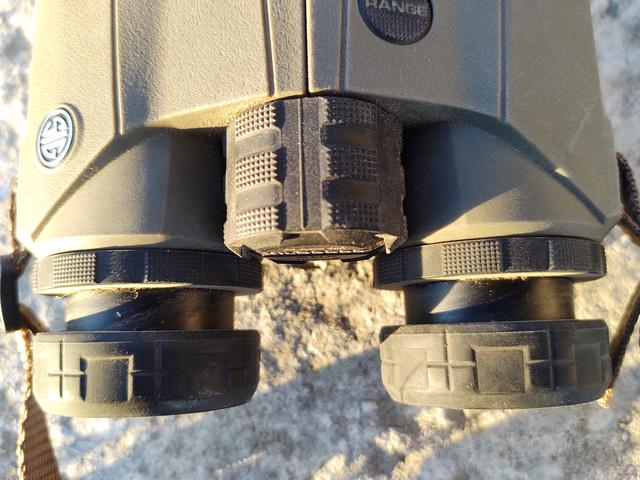
The diopter on the right is used for focusing the reticle and rangefinding display. The one on the left performs the traditional diopter function. These could definitely be improved by adding a lock function, or by greatly increasing the friction so that they do not move easily
However, other than that point, from an interface perspective, they work like any other binos, and the electronic control system will be instantly familiar to anyone that uses Sig’s other RF’s. It’s simple, well thought out, and provides a lot of user control without being over complicated. For example, when you range a target, it continually cycles through your elevation and wind holds until it times out, so if you miss a piece of information, just wait a second and it will come back. Simple things like this, and how the app is setup, shows that Sig has put a lot of time into creating a user interface that is user friendly and efficient while being full featured.
Connectivity and Tech
The 3k carries over all the connectivity functionality of the 2400 BDX. I did a review of the 2400 HERE, so I won’t rehash that information, and another covering the scope integration HERE. Suffice it to say, it works just as well as the 2400, connecting quickly to either the app or the Kestrel, and with the rare exception, staying connected. In terms of connection distance, that can vary, but I was able to get about 10 yards from the scope before connectivity dropped off, however, that only worked if there was clear line of sight between the two. If I placed my body between them, connectivity distance decreased. Likewise, in terms of environmentals and onboard ballistics, the 2400 BDX and the Sig 3k are virtual twins. Again, check out the 2400 BDX review, but basically, environmentals and your custom curve are uploaded to the RF via the app, with ballistics solutions being handled by the onboard AB ultralite software out to 800 yards. Alternatively, you can connect to the Kestrel via bluetooth, where all the ballistic and environmental work is handled by the Kestrel and the solution is displayed in the RF to as far as you want to shoot. Sig basically carried over the same functionality suite from the 2400, the only difference that I have discerned in this respect is that the 3k lacks the 2400’s different reticles.
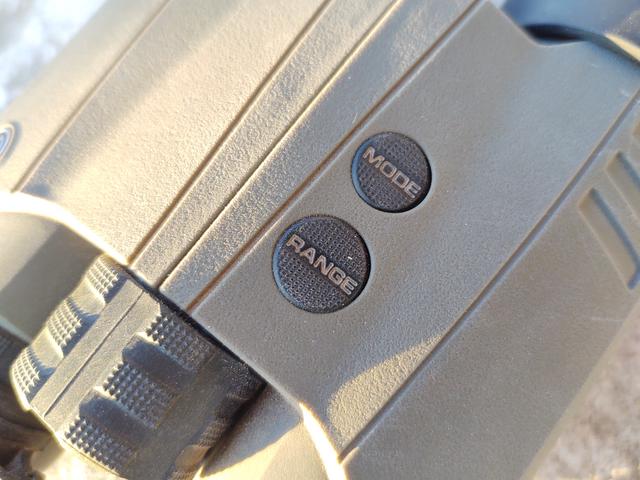
The 3000BDX carries over most of the user input design that Sig users are familiar with, including the standard two button user interface
Ranging
Where the 2400 and the 3k are essentially equals in the overall connectivity tech department, the same cannot be said when looking at their ranging capabilities. While the 2400 is certainly a capable unit, the 3k takes it to the next level and is a substantial improvement over the 2400. Divergence is published as 1.5 mils wide by .3 mils high, whereas the 2400 was 1.5 round. Even my Leicas are running 1.5x.5, so Sig’s specifications are very impressive.
Last edited:







